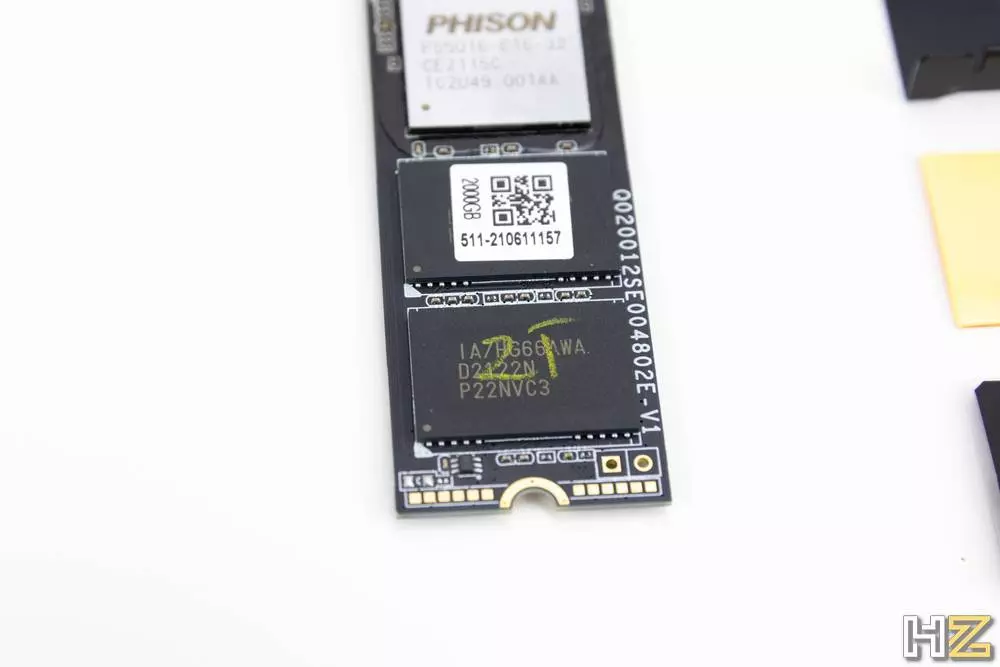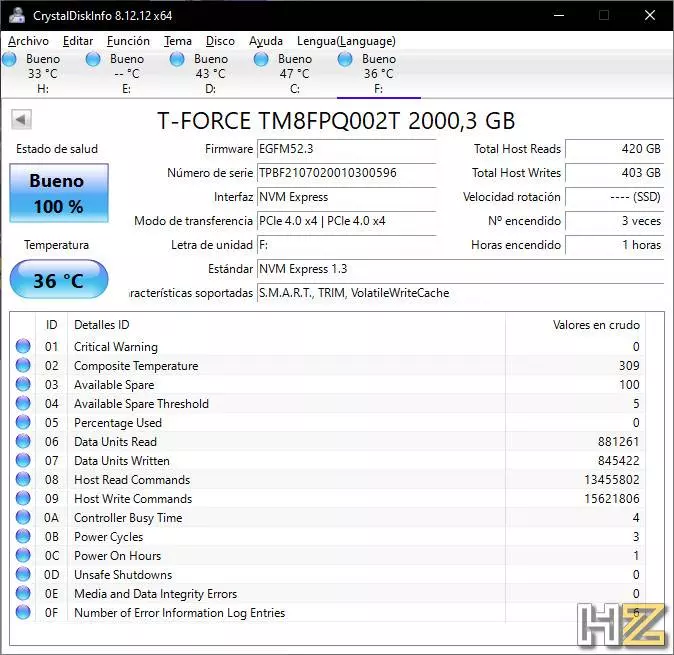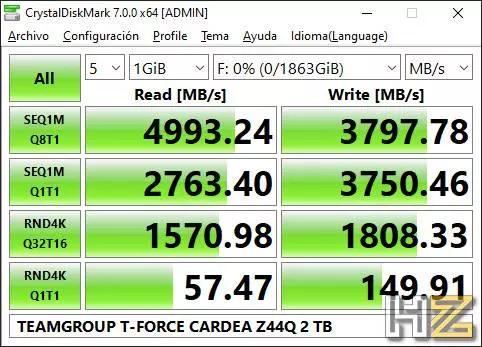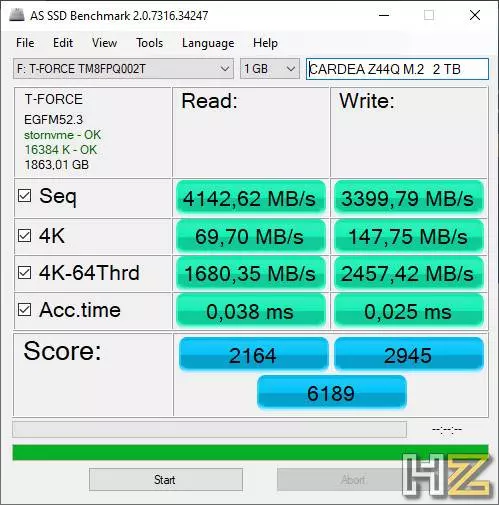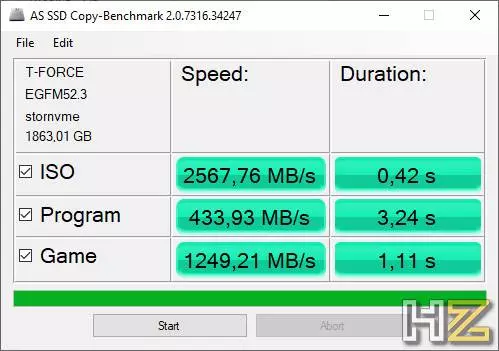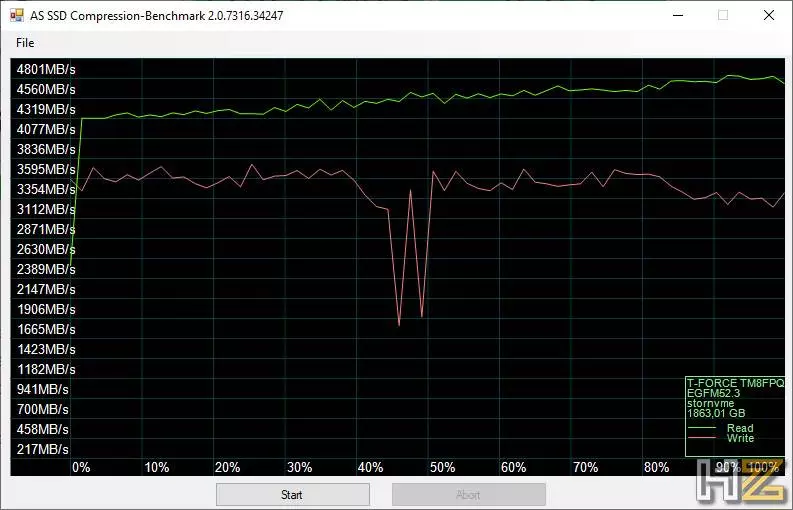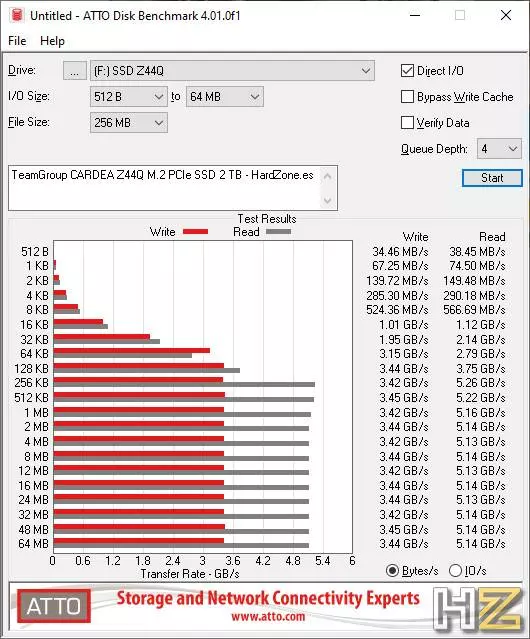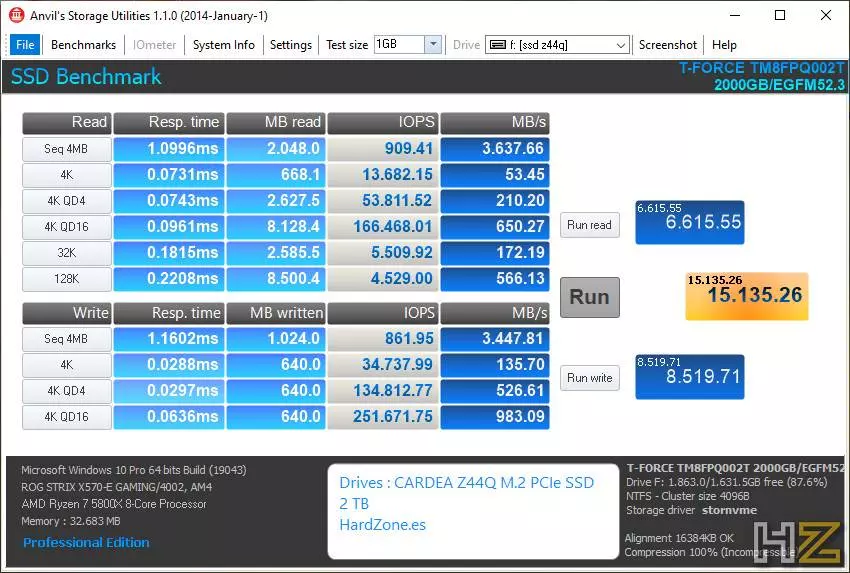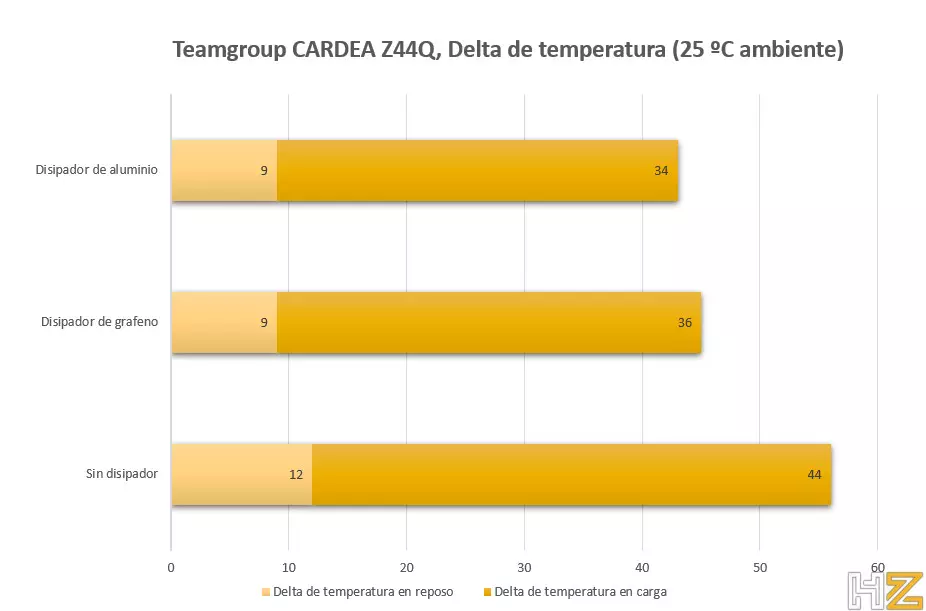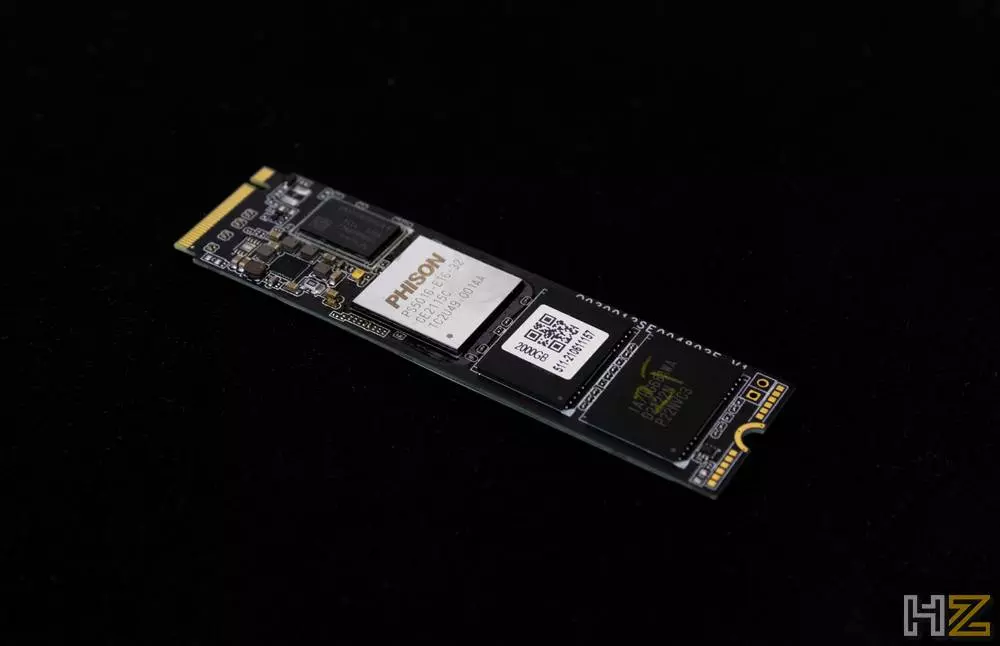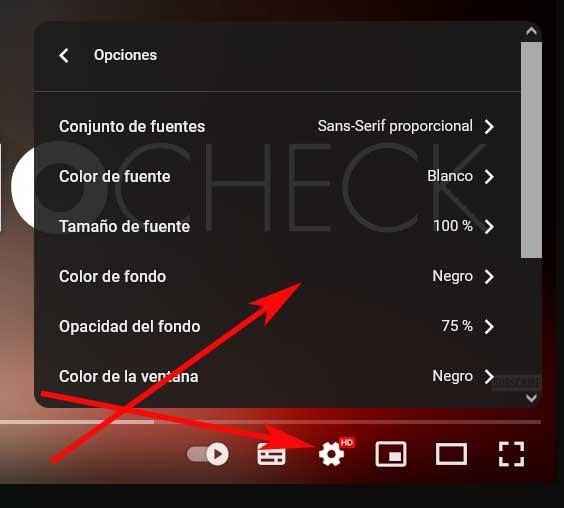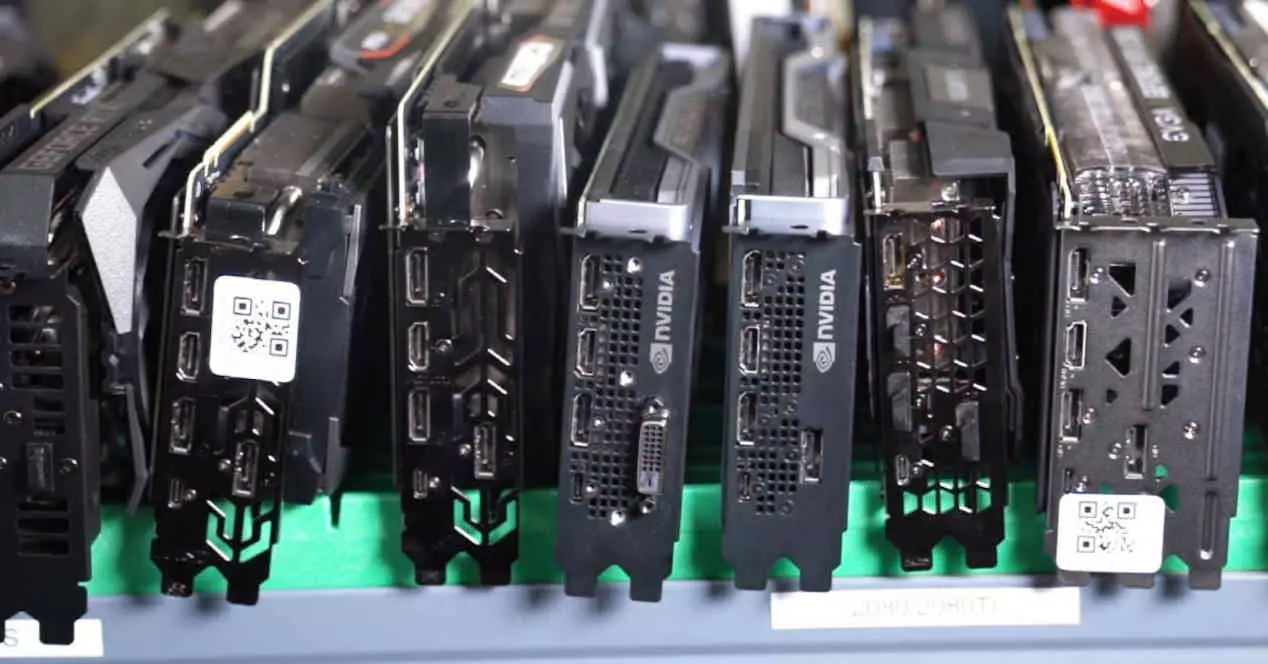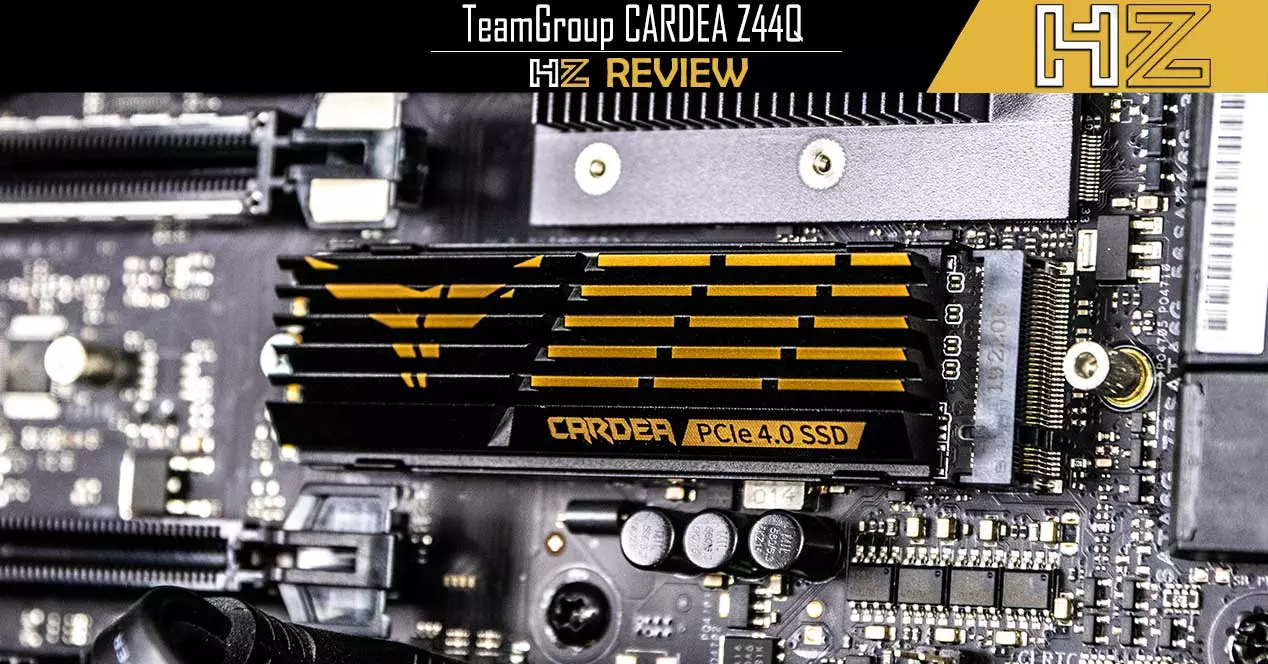
The SSD has a 2280 format, with a weight of 13 grams with the graphene heatsink, and 46 grams with the aluminum heatsink that it includes, being very convenient that the company gives us a choice depending on whether our motherboard includes a protector with Heatsink included for the PCIe slots of the SSDs.
Unboxing and external analysis
The box of the TEAMGROUP CARDEA Z44Q, like that of all NVMe SSD, it is quite compact. In it we find important information, such as the most relevant technical specifications, or instructions on how to place the aluminum and graphene heatsinks.
Taking everything out of the box, we find five different parts: the SSD, the aluminum heatsink, the metal bay in which to insert the SSD with the heatsink, and the graphene heatsink.
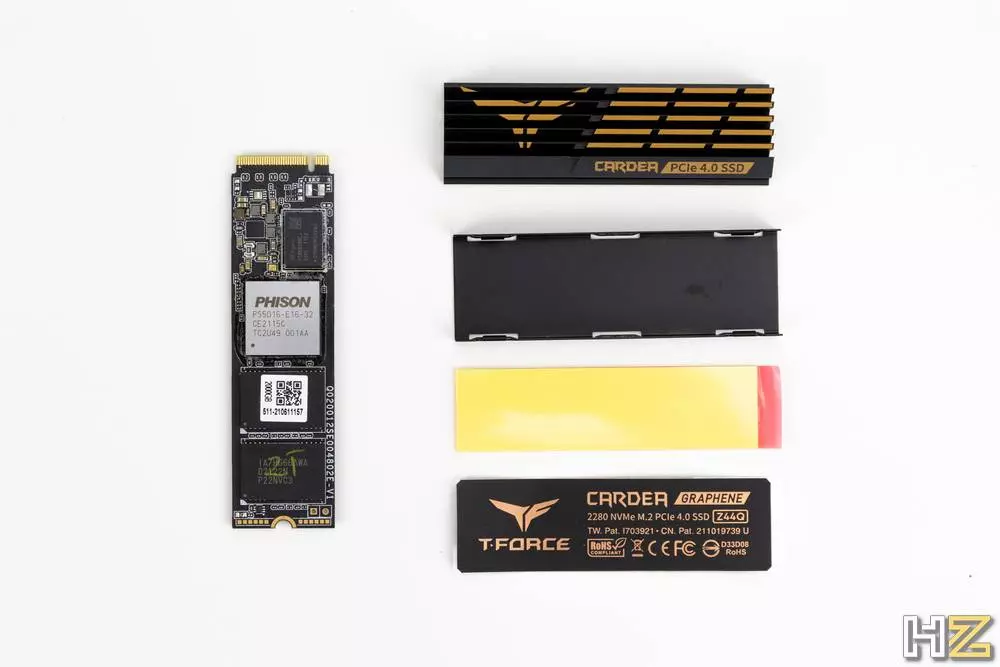
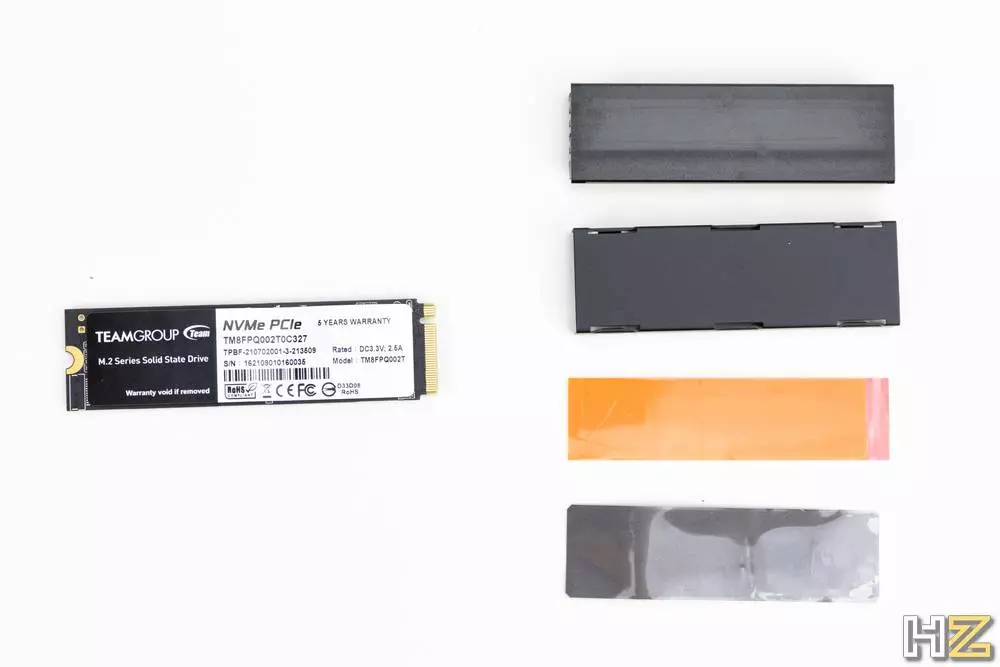
If we go to the SSD itself, we find a controller Phison PS5016-E16, which is designed to achieve speeds of up to 5 GB / s read and 4.4 GB / s read. Therefore, it goes perfectly with this SSD drive. It is manufactured by TSMC under a 28 nm node. Just above it we find 1 GB of DDR4 RAM manufactured by SK Hynix, and another that is on the other side of the SSD, so we have 2 GB of cache RAM.
Regarding memory chips, we find four 512GB modules each; two on one side and two on the other. On the label we can read «IA7HG66AWA«, Which does not give us much information when we Google more that they are manufactured by Micron and that they are 96-layer 3D NAND QLCs. As a curiosity, we found that these memory chips are exactly the same as those found in SSD drives such as the Corsair MP400 and MP600.
Proof of TEAMGROUP Cardea Z44Q
For the performance tests we have used the latest AMD hardware to get the most out of this SSD with PCIe 4.0 interface. For this, we have used the following computer with Windows 10 21H1 updated to October 24, 2021:
- Processor: AMD Ryzen 7 5800X
- Motherboard: ASUS ROG X570-E Gaming (BIOS 4002, AGESA V2 PI 1.2.0.3 Patch A)
- RAM Memory: Corsair Vengeance LPX DDR4 3600MHz PC4 28800 32GB 2x16GB CL18
- Power supply: be quiet! Dark Power Pro 11 750 W
- Graphics card: MSI GeForce RTX 3070 VENTUS 2X OC 8GB GDDR6
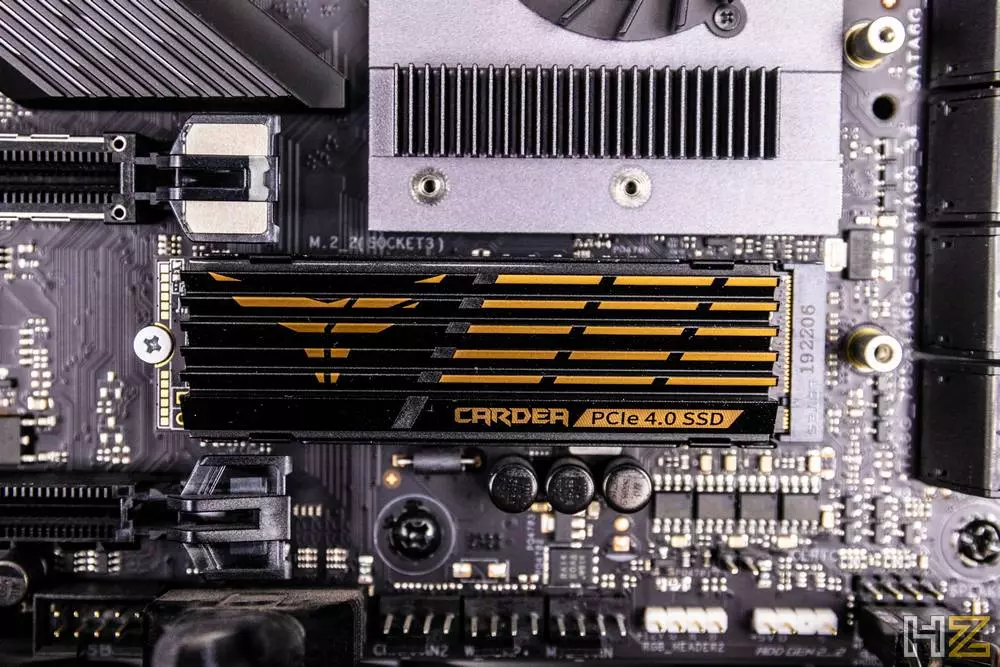
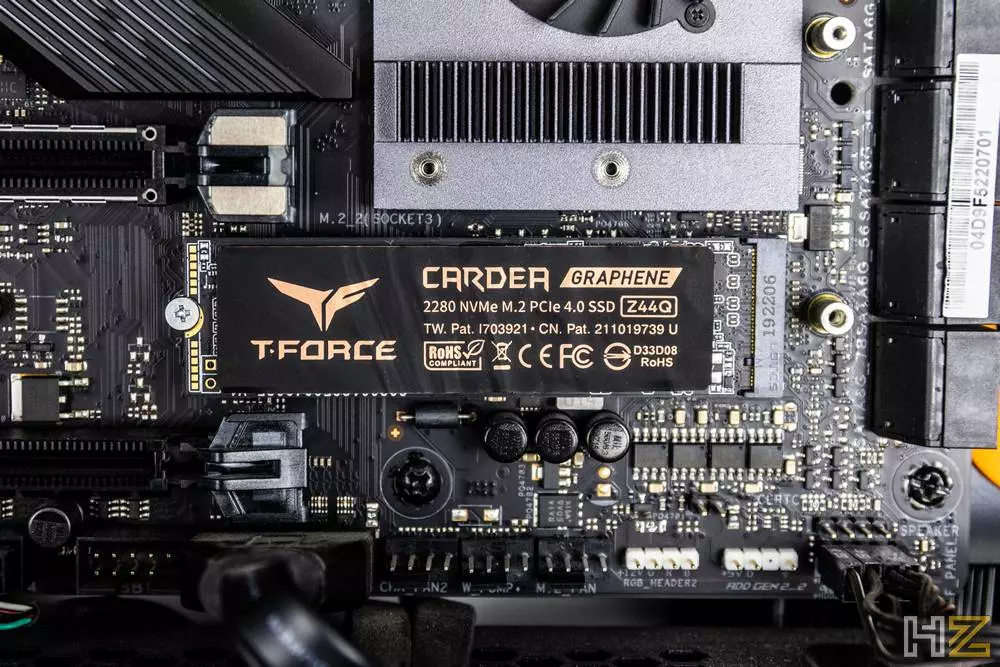
CrystalDiskInfo
Starting with CrystalDiskInfo, we can obtain some interesting information from the SSD unit, such as the EGFM52.3 firmware that the controller has installed, or the 4 × 4 interface. We also see compatibility with the NVMe 1.3 standard, and functionalities such as SMART, TRIM and VolatileWriteCache. Curiously, the manufacturer details that the SSD drive is compatible with NVMe 1.4, but only 1.3 is detected on the computer.
CrystalDiskMark
Going to the most important performance test of this SSD unit, we find a performance that not only reaches what the company promised in this same test, but also even exceeds the official specification. In sequential reading speed we get 4,993 MB / s, almost the 5 GB / s that the company promises, while in reading we get 3,797 MB / s, more than the 3,700 MB / s of the official specification.
Performance on other reads and writes is also good, even on 4K random read. However, the best PCIe 4.0 drives on the market typically exceed 200MB / s read, and here we are somewhat trimmed at 150MB / s.
AS SSD Benchmark
After CrystalDiskMark, the next test of the TEAMGROUP CARDEA Z44Q We have done it with AS SSD Benchmark, which also offers us interesting information. In addition to sequential and random reading and writing, we also have access times when reading or writing to the drive. In this case, we see that we are not facing one of the fastest drives, having 0.038 ms in reading and 0.025 in writing. The random performance data is similar to CrystalDiskMark, although in the sequential part we get slightly less performance.
In this program we also have two other additional tests. In the first one we can see the speed of the SSD when copying an ISO, a program and a game. Performance on large files like an ISO is very good, while on programs it drops quite a bit down to just 433 MB / s. In games we have an acceptable performance.
Lastly, we have the SSD performance test on non-compressible files. The reading performance is excellent, staying stable without any drop. In writing we have a little less speed and some occasional drop, which are usually normal.
ATTO Disk Benchmark
Continuing with the tests, we now have ATTO Disk Benchmark, an ideal test to carefully analyze how an SSD drive performs with files of all types of sizes, from 512 bytes to 64 MB files. This is ideal to know what the minimum performance of an SSD drive is, and to see from what point its performance stabilizes.
The minimum performance we see is 38 MB / s in read. As we increase the size, we see that the speed increases, exceeding the gig with files of 16 KB in size. Starting at 256 KB, the speed stabilizes. We even get a bit more speed compared to the official manufacturer’s reading specification with up to 5.26 GB / s, although slightly less than the writing specification with 3.45 GB / s.
Anvil Benchmark
Finally, we have the Anvil Benchmark, which, although it has not been updated for almost eight years, at least it serves to take a look at some interesting data such as the IOPS that the storage unit reaches in read and write.
Unfortunately, in our tests we see that the unit is very far from the official specification, with a rather unstable performance and a figure that reaches 166,480 IOPS for reading and 251,671 IOPS for writing. The writing speed reaches figures similar to those of ATTO Disk Benchmark, but the reading speed drops considerably.
Temperature
The temperature of this Cardea Z44Q is similar to that found in other units of the company such as the Cardea A440. We have made measurements with three different heatsink settings: one with the aluminum heatsink, one with the graphene heatsink, and one without any heatsink. For the aluminum heatsink, the included yellow thermal pad must be used, while the graphene one is applied directly. The maximum temperatures shown are in load repeating benchmark.
The ventilation on the front of the box was set to the maximum to guarantee a correct flow of air. With an ambient temperature of 25 ºC, the temperature delta obtained were the following:
As we can see, at rest the temperature between the aluminum heatsink and the graphene one is identical, with a delta of 9 degrees. It is when we put high loads that we see that the temperature rises to 59 degrees with the aluminum heatsink, and up to 61 degrees with the graphene one. In general, both solutions are very good for cooling our SSD unit, but the aluminum heatsink is the option that offers the best performance when charging.
In the case of using the SSD without a heatsink, it is not a good option, since at rest the temperature rises up to 12 degrees delta, and when loaded it reaches 44 degrees higher than the ambient temperature up to 69 degrees. This temperature is the maximum at which the unit can operate, and from then on its performance drops slightly to keep the temperature below the maximum 70 ºC specified by the company in the official specifications.
Therefore, it is mandatory use a heatsink if we don’t want to suffer thermal throttling. For a desktop computer it is best to use the aluminum one, but if we have space problems because it collides with a component, we will also obtain good performance with the graphene one. In the case of placing it in a laptop, it is essential to use the graphene to avoid temperature problems.
Conclusion of this Cardea Z44Q
The use of QLC memories is noticeable in this Z44Q unit, which is still a more affordable version of the A440, and which is actually an enhanced version of the Z440 with a controller that allows it to achieve quite acceptable performance. The Z44Q has memories with a slightly lower durability and speed than the A440, but in exchange for a more contained price in what is one of the few PCIe 4.0 SSD units that we can find on the market with QLC memory.
The performance is good enough to be able to use it without problem for gaming and for future features like DirectStorage, with 5 GB / s read and 3.7 GB / s write. Unfortunately, that speed falls short of the PS5’s minimum requirement of 5.5 GB / s, although there are users who claim that they have been able to install and configure it without problems. In addition, when the drive is full and the cache is saturated when we are writing information, the speed plummets to figures of a few hundred MB / s.
Regarding the price, we have not found the official figure in euros, but in United States dollars it stands at 269.99 dollars for this version. That makes it the cheapest PCIe 4.0 SSD on the market, where in that price range we usually find some PCIe 3.0 units with lower performance, and you have to go to 300 euros to find equivalent units in performance.
In exchange for that lower price, we have a lower performance than what we find in other more expensive solutions, but with a lot of versatility in terms of cooling options. Therefore, if you are looking for an SSD drive in which you prefer to sacrifice some speed in exchange for greater capacity for the same price, this drive is an excellent option; especially to store games and get the best performance from them at specific moments. To work with constant read and write access it may be better to spend a little more.
For all this, the TEAMGROUP CARDEA Z44Q SSD M.2 PCIe receives the gold medal, and our recommendation for its quality / price ratio.


